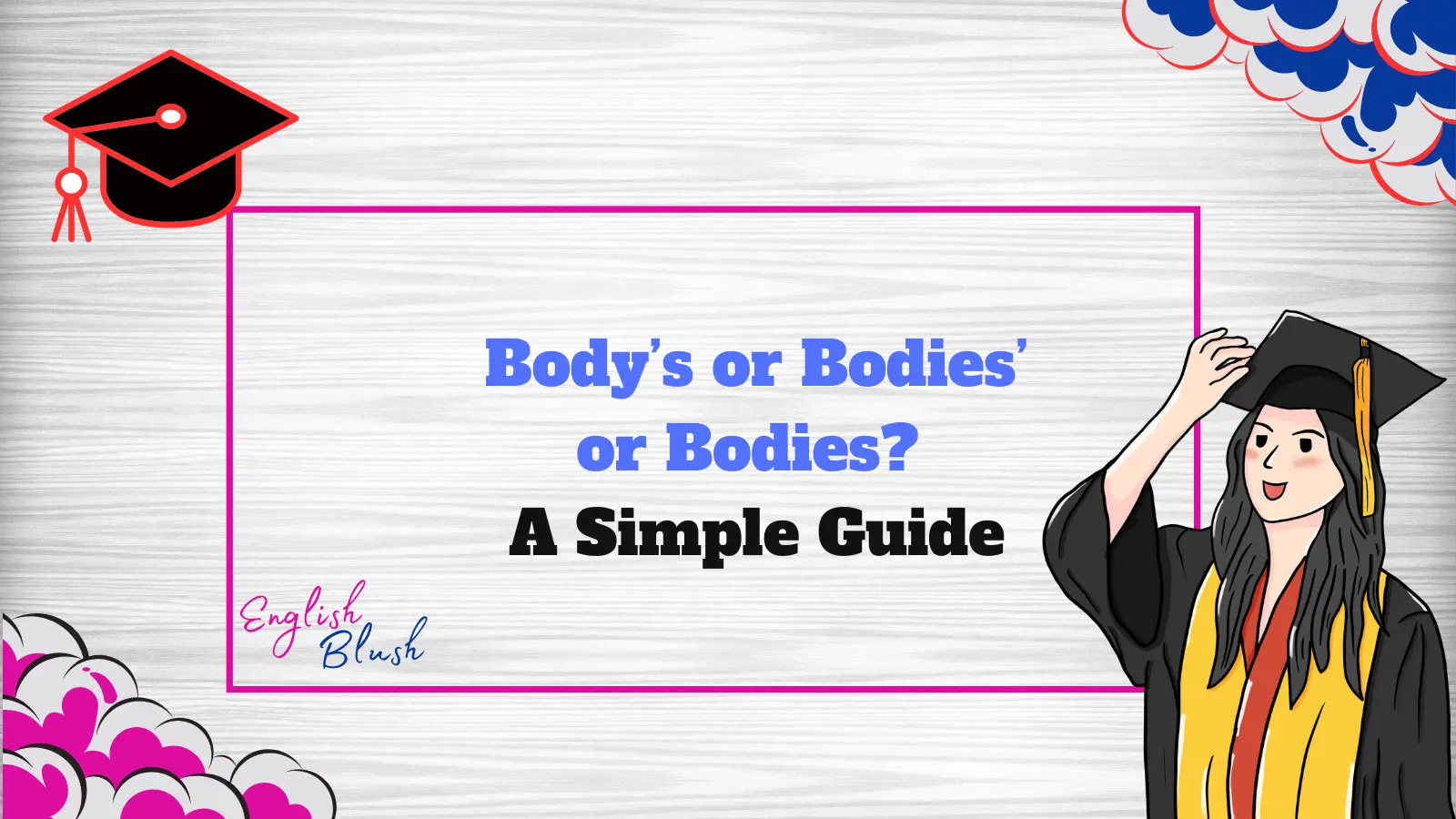When we talk about something belonging to someone or something, we use possessive forms. But what happens when we talk about more than one body? Should we say “body’s,” “bodies’,” or “bodies“? Let’s explore these different forms so you can understand them clearly!
What Are Possessive Forms?
Before we dive into the examples, let’s understand what a possessive form is. A possessive form shows that something belongs to someone or something. For example:
- The dog’s bone means the bone belongs to the dog.
- The teacher’s book means the book belongs to the teacher.
Now, let’s see how this works with the word “body.”
The Singular Possessive: Body’s
When we talk about one body belonging to someone or something, we add an apostrophe and an “s” to “body.” This is called the singular possessive.
For example:
- The body’s health means the health of one body.
- The body’s movement means the movement of one body.
Table: Singular Possessive Example
| Word | Singular Possessive | Example |
|---|---|---|
| Body | Body’s | The body’s condition is improving. |
The Plural Possessive: Bodies’
When we talk about more than one body belonging to someone or something, we use the plural form bodies and then add an apostrophe after the “s.” This is called the plural possessive.
For example:
- The bodies’ health means the health of multiple bodies.
- The bodies’ movements means the movements of multiple bodies.
Table: Plural Possessive Example
| Word | Plural Possessive | Example |
|---|---|---|
| Bodies | Bodies’ | The bodies’ positions were carefully measured. |
The Plural Form: Bodies
If we just want to talk about more than one body without showing possession (no ownership), we use the word bodies. This is simply the plural form.
For example:
- There are three bodies in the room.
- The bodies were found in the park.
Table: Plural Form Example
| Word | Plural Form | Example |
|---|---|---|
| Body | Bodies | The bodies were lying on the beach. |
Quick Summary: Body’s, Bodies’ or Bodies?
Let’s review the differences using a simple chart. This will help you remember when to use each form.
| Form | What it Means | Example |
|---|---|---|
| Body’s | Belonging to one body | The body’s reaction was slow. |
| Bodies’ | Belonging to more than one body | The bodies’ condition was critical. |
| Bodies | More than one body (no ownership) | The bodies were stacked on the floor. |
Final Thoughts
Understanding when to use body’s, bodies’, or bodies can be tricky at first, but it’s simple once you remember the rules.
- Use body’s when something belongs to one body.
- Use bodies’ when something belongs to more than one body.
- Use bodies when you’re talking about more than one body but not showing possession.
Now you’re ready to use these forms correctly in your writing!
This article is structured to provide clear, simple explanations for younger readers, with examples and tables to make the content easier to follow.





